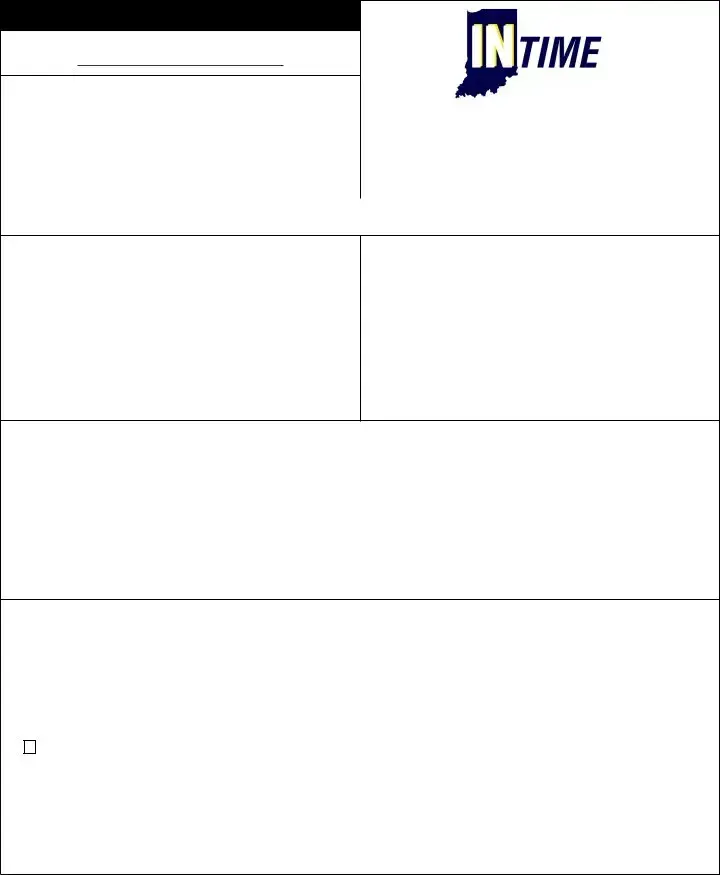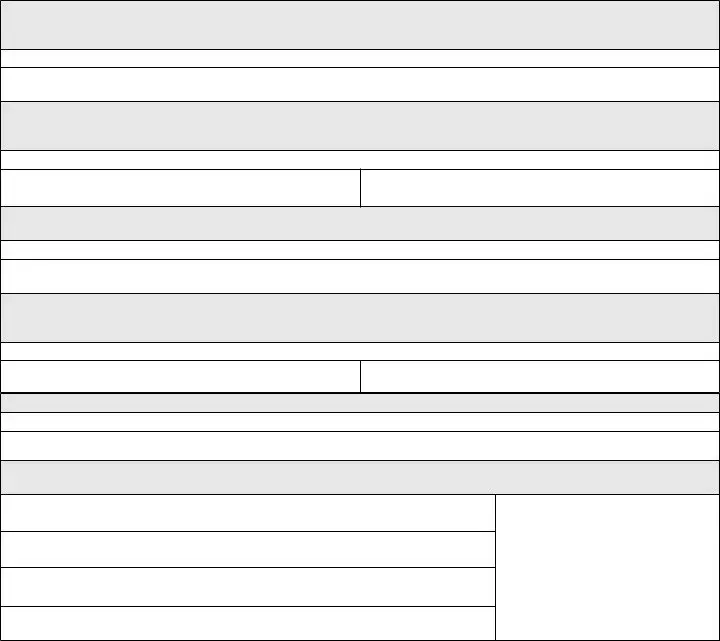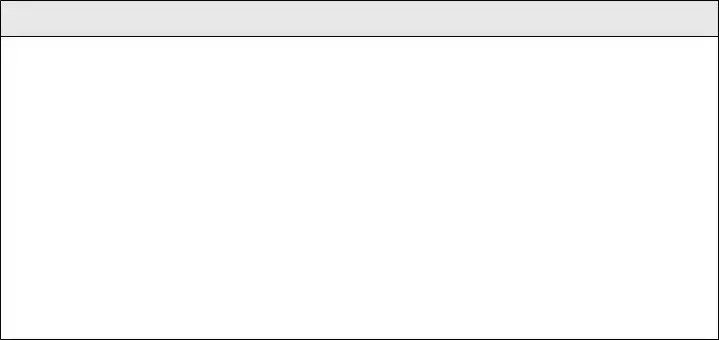This list of principal business activities and their associated codes is designed to classify an enterprise by type of activity in which it is engaged. These six-digit codes are derived from the North American Industry Classification System (NAICS) and do not resemble prior year codes. Select the category that best describes your primary business activity (for example Real Estate). Then select the activity that best identifies the principal source of your sales or receipts (for example, real estate agent). Now find the six-digit code assigned to this activity and enter it on all appropriate forms. The business tax application (BT-1) will accommodate up to four different codes related to your business. The codes will assist the Department in mailing tax bulletins and other information applicable to your business.
Code |
|
Code |
|
Code |
|
11 |
Agriculture, Forestry, Fishing and Hunting |
1122 |
Hog and Pig Farming |
1152 |
Support Activities for Animal Production |
111 |
Crop Production |
11221 |
Hog and Pig Farming |
11521 |
Support Activities for Animal Production |
1111 |
Oilseed and Grain Farming |
112210 |
Hog and Pig Farming |
115210 |
Support Activities for Animal Production |
11111 |
Soybean Farming |
1123 |
Poultry and Egg Production |
1153 |
Support Activities for Forestry |
111110 |
Soybean Farming |
11231 |
Chicken Egg Production |
11531 |
Support Activities for Forestry |
11112 |
Oilseed (except Soybean) Farming |
112310 |
Chicken Egg Production |
115310 |
Support Activities for Forestry |
111120 |
Oilseed (except Soybean) Farming |
11232 |
Broilers and Other Meat Type Chicken |
21 |
Mining, Quarrying, and Oil and Gas |
11113 |
Dry Pea and Bean Farming |
|
Production |
|
Extraction |
111130 |
Dry Pea and Bean Farming |
112320 |
Broilers and Other Meat Type Chicken |
211 |
Oil and Gas Extraction |
11114 |
Wheat Farming |
|
Production |
2111 |
Oil and Gas Extraction |
111140 |
Wheat Farming |
11233 |
Turkey Production |
21112 |
Crude Petroleum Extraction |
11115 |
Corn Farming |
112330 |
Turkey Production |
211120 |
Crude Petroleum Extraction |
111150 |
Corn Farming |
11234 |
Poultry Hatcheries |
21113 |
Natural Gas Extraction |
11116 |
Rice Farming |
112340 |
Poultry Hatcheries |
211130 |
Natural Gas Extraction |
111160 |
Rice Farming |
11239 |
Other Poultry Production |
212 |
Mining (except Oil and Gas)T |
11119 |
Other Grain Farming |
112390 |
Other Poultry Production |
2121 |
Coal Mining |
111191 |
Oilseed and Grain Combination Farming |
1124 |
Sheep and Goat Farming |
21211 |
Coal Mining |
111199 |
All Other Grain Farming |
11241 |
Sheep Farming |
212111 |
Bituminous Coal and Lignite Surface Mining |
1112 |
Vegetable and Melon Farming |
112410 |
Sheep Farming |
212112 |
Bituminous Coal Underground Mining |
11121 |
Vegetable and Melon Farming |
11242 |
Goat Farming |
212113 |
Anthracite Mining |
111211 |
Potato Farming |
112420 |
Goat Farming |
2122 |
Metal Ore Mining |
111219 |
Other Vegetable (except Potato) and Melon |
1125 |
Aquaculture |
21221 |
Iron Ore Mining |
|
Farming |
11251 |
Aquaculture |
212210 |
Iron Ore Mining |
1113 |
Fruit and Tree Nut Farming |
112511 |
Finfish Farming and Fish Hatcheries |
21222 |
Gold Ore and Silver Ore Mining |
11131 |
Orange Groves |
112512 |
Shellfish Farming |
212221 |
Gold Ore Mining |
111310 |
Orange Groves |
112519 |
Other Aquaculture |
212222 |
Silver Ore Mining |
11132 |
Citrus (except Orange) Groves |
1129 |
Other Animal Production |
21223 |
Copper, Nickel, Lead, and Zinc Mining |
111320 |
Citrus (except Orange) Groves |
11291 |
Apiculture |
212230 |
Copper, Nickel, Lead, and Zinc Mining |
11133 |
Noncitrus Fruit and Tree Nut Farming |
112910 |
Apiculture |
21229 |
Other Metal Ore Mining |
111331 |
Apple Orchards |
11292 |
Horses and Other Equine Production |
212291 |
Uranium-Radium-Vanadium Ore Mining |
111332 |
Grape Vineyards |
112920 |
Horses and Other Equine Production |
212299 |
All Other Metal Ore Mining |
111333 |
Strawberry Farming |
11293 |
Fur-Bearing Animal and Rabbit Production |
2123 |
Nonmetallic Mineral Mining and Quarrying |
111334 |
Berry (except Strawberry) Farming |
112930 |
Fur-Bearing Animal and Rabbit Production |
21231 |
Stone Mining and Quarrying |
111335 |
Tree Nut Farming |
11299 |
All Other Animal Production |
212311 |
Dimension Stone Mining and Quarrying |
111336 |
Fruit and Tree Nut Combination Farming |
112990 |
All Other Animal Production |
212312 |
Crushed and Broken Limestone Mining and |
111339 |
Other Noncitrus Fruit Farming |
113 |
Forestry and Logging |
|
Quarrying |
1114 |
Greenhouse, Nursery, and Floriculture |
1131 |
Timber Tract Operations |
212313 |
Crushed and Broken Granite Mining and |
|
Production |
11311 |
Timber Tract Operations |
|
Quarrying |
11141 |
Food Crops Grown Under Cover |
113110 |
Timber Tract Operations |
212319 |
Other Crushed and Broken Stone Mining |
111411 |
Mushroom Production |
1132 |
Forest Nurseries and Gathering of Forest |
|
and Quarrying |
111419 |
Other Food Crops Grown Under Cover |
|
Products |
21232 |
Sand, Gravel, Clay, and Ceramic and |
11142 |
Nursery and Floriculture Production |
11321 |
Forest Nurseries and Gathering of Forest |
|
Refractory Minerals Mining and Quarrying |
111421 |
Nursery and Tree Production |
|
Products |
212321 |
Construction Sand and Gravel Mining |
111422 |
Floriculture Production |
113210 |
Forest Nurseries and Gathering of Forest |
212322 |
Industrial Sand Mining |
1119 |
Other Crop Farming |
|
Products |
212324 |
Kaolin and Ball Clay Mining |
11191 |
Tobacco Farming |
1133 |
Logging |
212325 |
Clay and Ceramic and Refractory Minerals |
111910 |
Tobacco Farming |
11331 |
Logging |
|
Mining |
11192 |
Cotton Farming |
113310 |
Logging |
21239 |
Other Nonmetallic Mineral Mining and |
111920 |
Cotton Farming |
114 |
Fishing, Hunting and Trapping |
|
Quarrying |
11193 |
Sugarcane Farming |
1141 |
Fishing |
212391 |
Potash, Soda, and Borate Mineral Mining |
111930 |
Sugarcane Farming |
11411 |
Fishing |
212392 |
Phosphate Rock Mining |
11194 |
Hay Farming |
114111 |
Finfish Fishing |
212393 |
Other Chemical and Fertilizer Mineral |
111940 |
Hay Farming |
114112 |
Shellfish Fishing |
|
Mining |
11199 |
All Other Crop Farming |
114119 |
Other Marine Fishing |
212399 |
All Other Nonmetallic Mineral Mining |
111991 |
Sugar Beet Farming |
1142 |
Hunting and Trapping |
213 |
Support Activities for Mining |
111992 |
Peanut Farming |
11421 |
Hunting and Trapping |
2131 |
Support Activities for Mining |
111998 |
All Other Miscellaneous Crop Farming |
114210 |
Hunting and Trapping |
21311 |
Support Activities for Mining |
112 |
Animal Production and Aquaculture |
115 |
Support Activities for Agriculture and |
213111 |
Drilling Oil and Gas Wells |
1121 |
Cattle Ranching and Farming |
|
Forestry |
213112 |
Support Activities for Oil and Gas |
11211 |
Beef Cattle Ranching and Farming, |
1151 |
Support Activities for Crop Production |
|
Operations |
|
including Feedlots |
11511 |
Support Activities for Crop Production |
213113 |
Support Activities for Coal Mining |
112111 |
Beef Cattle Ranching and Farming |
115111 |
Cotton Ginning |
213114 |
Support Activities for Metal Mining |
112112 |
Cattle Feedlots |
115112 |
Soil Preparation, Planting, and Cultivating |
213115 |
Support Activities for Nonmetallic Minerals |
11212 |
Dairy Cattle and Milk Production |
115113 |
Crop Harvesting, Primarily by Machine |
|
(except Fuels) Mining |
112120 |
Dairy Cattle and Milk Production |
115114 |
Postharvest Crop Activities (except Cotton |
22 |
Utilities |
11213 |
Dual-Purpose Cattle Ranching and Farming |
|
Ginning) |
221 |
Utilities |
112130 |
Dual-Purpose Cattle Ranching and Farming |
115115 |
Farm Labor Contractors and Crew Leaders |
2211 |
Electric Power Generation, Transmission |
|
|
115116 |
Farm Management Services |
|
and Distribution |






